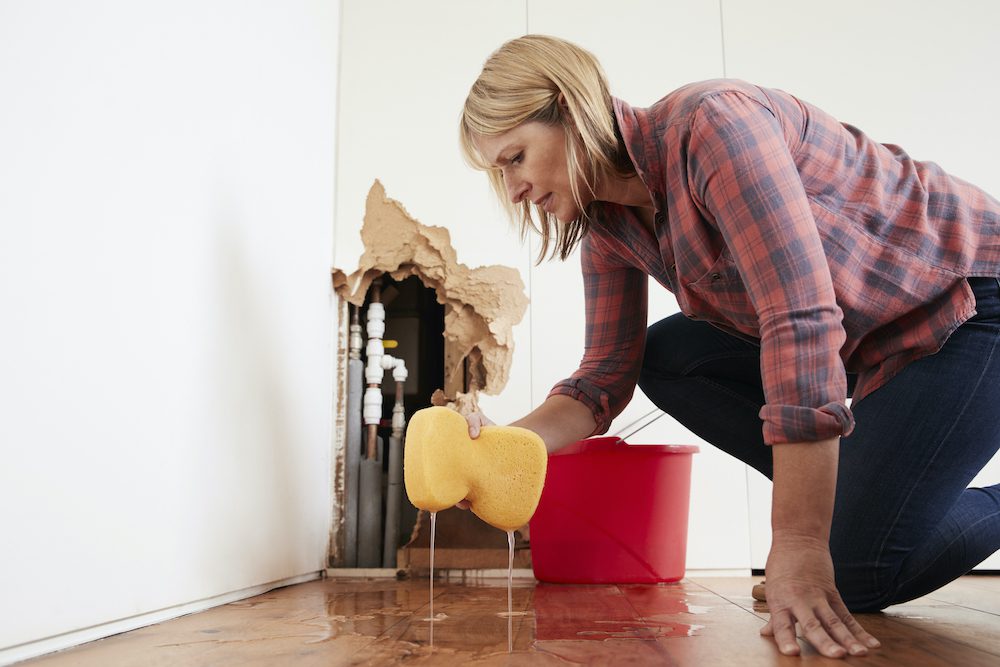Guide To Water Leakage Detection At Home
Guide To Water Leakage Detection At Home
Blog Article
The writer is making a few good points regarding Finding hidden leaks as a whole in this content below.

Early discovery of dripping water lines can alleviate a possible disaster. Some small water leaks may not be noticeable.
1. Check Out the Water Meter
Checking it is a proven way that helps you discover leaks. If it moves, that suggests a fast-moving leak. This means you might have a slow leakage that can also be below ground.
2. Check Water Consumption
Analyze your water expenses as well as track your water usage. As the one paying it, you should discover if there are any type of disparities. If you detect sudden changes, regardless of your intake coinciding, it indicates that you have leaks in your plumbing system. Keep in mind, your water costs should drop under the same array on a monthly basis. A sudden spike in your costs shows a fast-moving leakage.
At the same time, a constant increase every month, despite having the very same habits, shows you have a slow-moving leakage that's also gradually escalating. Call a plumber to extensively examine your residential or commercial property, especially if you really feel a cozy area on your flooring with piping below.
3. Do a Food Coloring Examination
When it comes to water usage, 30% comes from bathrooms. If the shade in some way infiltrates your dish throughout that time without flushing, there's a leak in between the storage tank and also dish.
4. Asses Outside Lines
Don't neglect to inspect your outdoor water lines too. Test spigots by connecting a garden tube. Needs to water seep out of the link, you have a loosened rubber gasket. Replace this and make certain all connections are tight. It will certainly aid get it properly analyzed as well as kept each year if you have actually got a sprinkler system. One small leakage can throw away lots of water and increase your water expense.
5. Examine the situation and evaluate
Homeowners should make it a behavior to examine under the sink counters as well as also inside closets for any bad odor or mold and mildew growth. These 2 red flags show a leakage so timely focus is needed. Doing routine examinations, even bi-annually, can save you from a significant trouble.
More importantly, if you understand your home is currently old, maintain a watchful eye on your heating systems, pipes, pipelines and so on. Look for discolorations and also deteriorating as a lot of pipelines and also home appliances have a life expectancy. They will certainly also normally degrade due to wear and tear. Do not wait for it to escalate if you think leaking water lines in your plumbing system. Call a professional plumber right away so you do not wind up with a horrible mess in your house.
Early detection of leaking water lines can mitigate a possible disaster. Some little water leaks may not be noticeable. Checking it is a surefire means that assists you find leaks. One little leak can lose heaps of water as well as increase your water expense.
If you believe leaking water lines in your plumbing system, do not wait for it to intensify.
How to Know If Your Home Has a Hidden Leak
Water Meter Reveals Inexplicable Water Usage
If you’d like to test whether or not there’s a leak somewhere in your home, you can do this using your water meter. Here is how to conduct the test:
Don’t use any water in your home for at least 30 minutes; this also means not turning on faucets or water-using appliances.
Go outside, and check your water meter for activity.
If your water meter shows that there was activity, even though no one was using any water, this proves that there is a leak in your home.Visible Mold or Mildew Growth
Leaks behind walls create moist, dark environments that allow mold and mildew to grow and thrive. Eventually, you might see mold growth forming on the wall closest to a hidden leak.
If mold is growing in an area that receives a high amount of moisture, such as a bathroom, it may simply be an indication that better ventilation is needed. However, if you see mold growth on a wall or the ceiling in an area where you would not expect, you probably have a hidden leak.
Musty, Mildew Odor
Sometimes you might not be able to see the mold or mildew that is growing as a result of a leak. However, the smell can give the problem away just as easily. If you catch a whiff of something musty, there’s a good chance that old water is collecting somewhere in your home that you can’t see.
Stained/Warped Walls, Ceilings, or Floors
When your home soaks up water, a variety of red flags can become visible, including ceiling stains, bubbling drywall, warped walls, and sagging floors. While these issues can be caused by excess humidity, they can also be signs that a pipe or plumbing connection has started leaking behind your walls.
Inexplicably High Water Bill
After a while, you get a general sense for what your water bill should be. If you own a pool or sprinkler system, your bill will tend to be higher during summer. However, if you receive a water bill that seems especially high, and you can’t figure out what caused it, then you may have a hidden leak somewhere that’s increasing your bill.
https://www.plumbingjoint.com/blog/2019/july/how-to-know-if-your-home-has-a-hidden-leak/

Do you really like reading about Finding hidden leaks? Try leaving feedback down the page. We'd be delighted to find out your ideas about this blog entry. We are looking forward that you come back again in the near future. Enjoyed our posting? Please share it. Help someone else locate it. Thanks so much for going through it.
Report this page